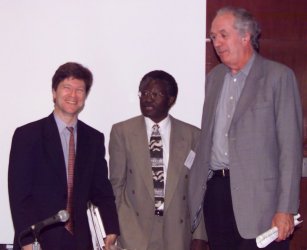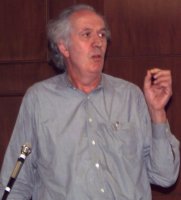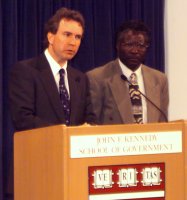|
 Professor
Sachs then went on to discuss biotechnology and the precautionary principle.
He stated
that the precautionary principle is essentially a risk assessment tool,
and that if there are no externalities, then individuals should be able
to manage their own risks. He proposed that labeling could be a potentially
useful mechanism. He also suggested the need for: delivery assessment
to look at biotechnology's net effects; risk evasion frameworks to evaluate
whether the loss of a technological application is more painful than
its gains; investing in a better understanding of biotechnology; decentralized
decision-making; and using independent scientists and peer reviews to
evaluate risks. In closing, he suggested that while the political debate
over biotechnology may continue in Europe, the furor will subside elsewhere
given its general adoption in the US, China, India and increasingly
in Latin America. He noted the reluctance to adopt the technology in
Africa, mainly due to Europe's influence and donor role, but believed
that overall the technology will continue to grow.
Professor
Sachs then went on to discuss biotechnology and the precautionary principle.
He stated
that the precautionary principle is essentially a risk assessment tool,
and that if there are no externalities, then individuals should be able
to manage their own risks. He proposed that labeling could be a potentially
useful mechanism. He also suggested the need for: delivery assessment
to look at biotechnology's net effects; risk evasion frameworks to evaluate
whether the loss of a technological application is more painful than
its gains; investing in a better understanding of biotechnology; decentralized
decision-making; and using independent scientists and peer reviews to
evaluate risks. In closing, he suggested that while the political debate
over biotechnology may continue in Europe, the furor will subside elsewhere
given its general adoption in the US, China, India and increasingly
in Latin America. He noted the reluctance to adopt the technology in
Africa, mainly due to Europe's influence and donor role, but believed
that overall the technology will continue to grow.
|












